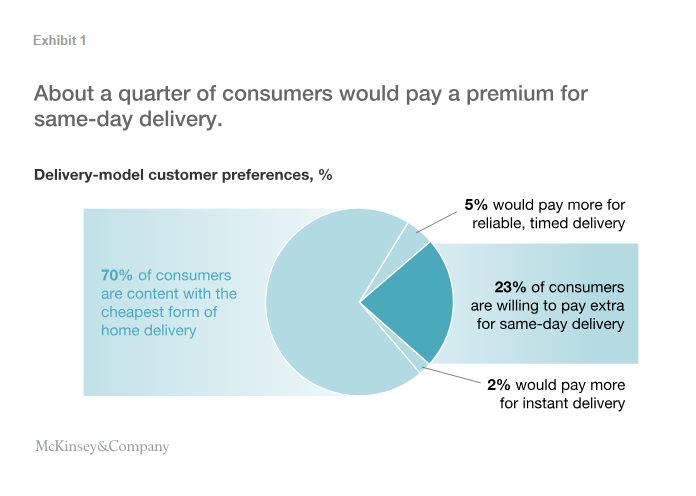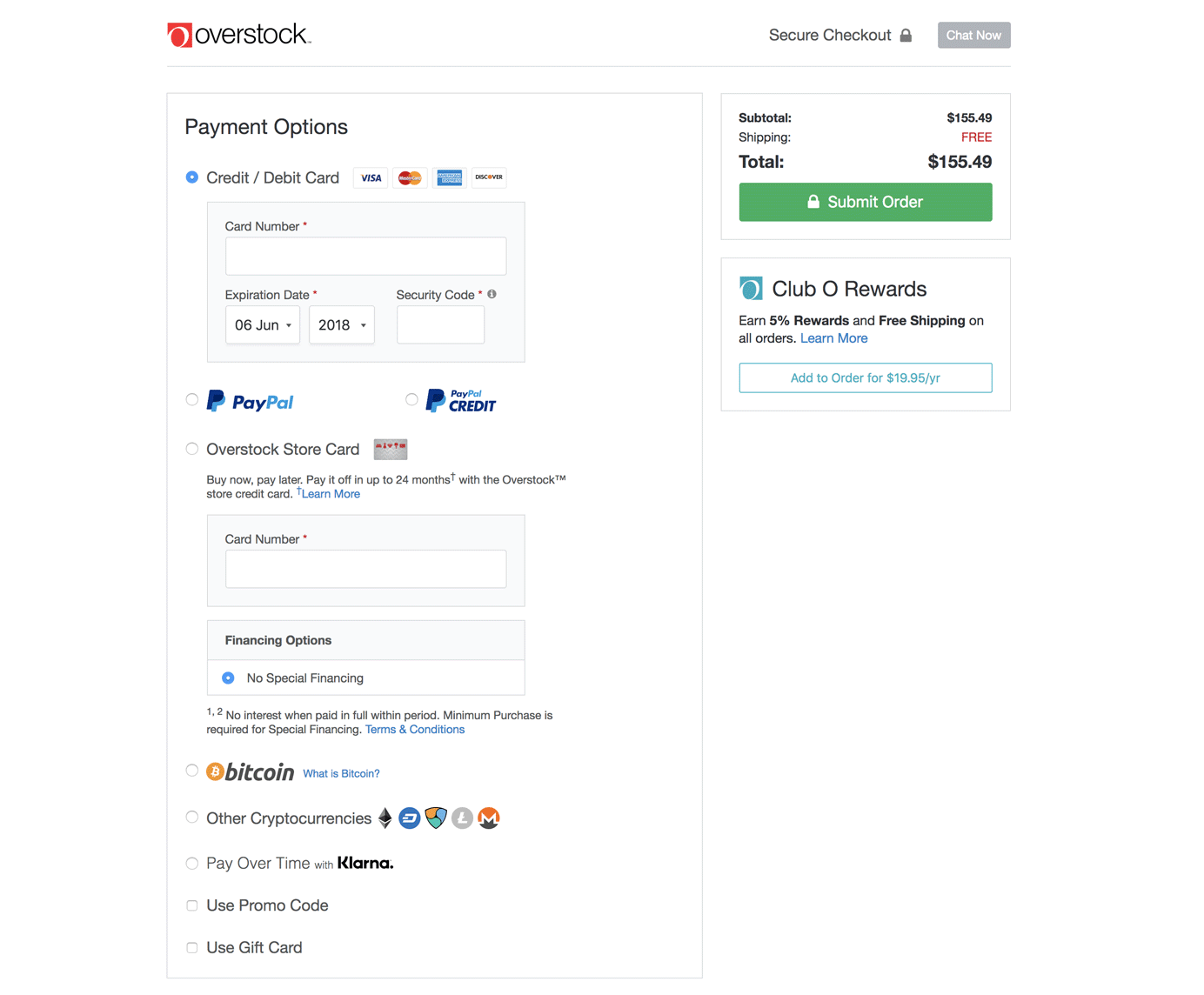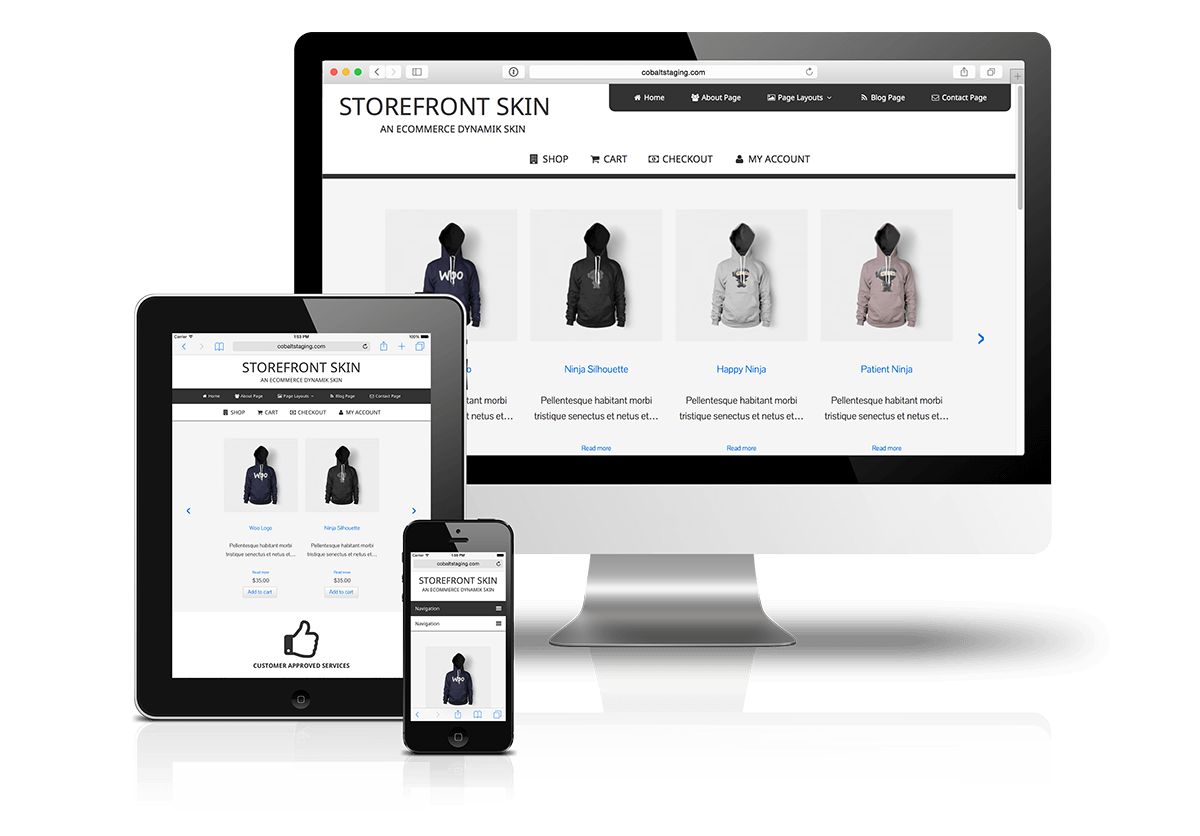Let’s face it.
No matter what, e-commerce retailers need to obsess about user expectations now more than ever before.
Why? It’s because with an infinite amount of e-commerce stores chasing a finite amount of customer attention today, viewing things from users’ perspective and tailoring features in keeping with their ever-changing requirements is the only way to grab user attention.
Amazon is one site that has its User Expectation Glasses on, every single time. For instance, webrooming (more on this in a minute) may be the new normal, but Amazon launched Amazon Go stores in December 2016.
Or, for that matter, consider its same-day delivery options – a feature that helps this eCommerce giant take any physical store, head-on. Now, even Alibaba intends to walk into Amazon’s shoes as it plans to launch a physical store, shortly. In addition to these two new user expectations, there are other expectations as well that e-commerce sites need to pay heed to in due course.
Here’s a checklist of new user expectations that may sweep over the e-commerce landscape in increasing numbers in the future
New User Expectation #1: Frictionless Webrooming and Showrooming Experience
As it turns out, the success of your online store is largely fueled by its offline experiences. Though companies, in principle, view online stores and brick-and-mortar as two independent entities; customers seriously view them as one. So, it’s not a departure from convention, if the latter expects seamless shopping experience as they switch from an online to an offline store or vice versa to purchase products.
This switch, particularly from an online to an offline setup, while purchasing of the products is referred to as webrooming. Contrarily, when shoppers check out the product in-store first, before purchasing it online, is called as showrooming.
Given that customers go back-and-forth while purchasing of the products, it’s important for businesses to ensure the seamless flow of services and products between the offline and online space. That’s the best way to accelerate the overall sales of your stores, rather than banking on one particular store to do all the slogging.
Here’s the rub: Setting up an online store is a hefty undertaking. Many online stores cannot think of setting up permanent physical stores. That’s how the Pop Up Store culture is picking up. Though pop-up stores are temporarily set-up, it’s sure to complement the activities of your e-commerce business.
New User Expectation #2: Same-day or Instant Delivery of Products
According to Mckinsey’s study, nearly 25% of consumers are willing to pay a premium to receive same-day or instant delivery of products. And, unsurprisingly, it’s the younger consumers who are opting for the same-day or instant delivery option, according to the study.

In wake of this new user expectation, e-commerce sites are considering three kinds of consumer delivery models for speedy parcel deliveries, namely the autonomous ground vehicles that come with parcel lockers, drones, and bike couriers.
That said, for e-grocery delivery, people might still favor human delivery over drone delivery as people usually prefer to have crates to be carried up to their apartments and even may want to have their returns handled directly.
All these new developments would mean that eCommerce companies would be hardly relying on third-party shipping providers such as UPS, FEDEX, and governmental postal services for shipping purposes anymore.
And, with so many eCommerce stores bursting on the internet scene today, speedy shipping is sure to give your store a definite edge.
New User Expectation #3: Flexible Payment Options
In the initial stages of eCommerce business, payments were allowed only through credit cards. However, these days a plethora of payment options are available, including PayPal, Amazon Pay, Apple Pay, Amex Express Checkout and more. Overstock.com even offers the option to pay via bitcoin. (However, it’s still to be seen whether users would be comfortable using cryptocurrencies.)
New User Expectation #4: More Customer Care Channels to Connect
If anything, users should have more channels at their disposal when communicating with your customer care team. Besides chat and click-to-call, users should be free to communicate through different social media channels, too.
How is it going to help?
Let’s say if the user is at his workplace and is not able to pick up your phone calls. In such instances, he or she should be able to communicate with you via a Whatsapp message. Or, in case you are driving and unable to chat, then a phone call to the customer care team should suffice.
Users may have several things going on at the same time. So, it may not be easier for them to communicate with you through a particular channel, every time. So, rather than making them wait, and complicating things further, help them put in a quick word to you through a Facebook Messenger chat or something.
New User Expectation #5: Native Shopping Experience
Users spent a majority of their time on social media channels. Facebook, Snapchat, Pinterest, and Instagram are the breeding ground for social butterflies. And, so it’s become more important than ever for e-commerce platforms to offer a native shopping experience to users on these platforms.
An experiment ran by Hubspot in 2017, found that Facebook audience favored native video content 160x more than non-native content.
Instagram is sort of a torchbearer in terms of offering a native shopping experience to users. Thanks to its Shoppable Post feature, users can now shop products from their personal Instagram account.
On the other hand, Pinterest’s shopping feature allows you to have closer look at any part of the item you are interested in and find details about the same within the Pinterest app. You exit the app only when you are ready to make the purchases. Facebook, again, offers ‘Shop the Look’ feature. And, just like in the case of Pinterest, it directs you to the website page when you are ready to make the required purchases.
So, if your ecommerce site actively engages social media platforms to drive traction and conversions, make sure you nail down only those sites that offer a native shopping experience to its users.
New User Expectation #6: Surprise and Delight at all Levels
The effortless shopping experience is just one thing users expect as their comfort level with e-commerce grows. Factoring in elements such as surprise and delight, while offering tailor-made experiences to shoppers, is equally important to grab audience attention these days.
For instance, Stitch Fix offers curated-clothing service online. And, what gives this personal shopping experience provider a competitive advantage is its amazing offline delivery services. Each box of Stitch Fix is uniquely tailored to offer inspirational outfit ideas to its buyers.
Nordstrom has opened a 3,000 sq/ft store with a pure focus on services and brand experience. The American-chain of the departmental store, in addition to offering tailoring, try-ons, stylists and more, offers fresh juices and manicures. More importantly, the space doubles as a pickup and return point for online purchases.
New User Expectation #7: Augmented Reality and Virtual Reality Services
If seeing is believing nothing could beat the experience of seeing a product in-store before purchasing it.
However, with eCommerce stores gaining ground, the prospect of seeing and feeling a product is almost out of question. So, the best possible option available to users is to take recourse in AR and VR technologies that could, to say the least, virtually help you see and feel the products.
AR and VR technologies are so programmed that, in addition to helping you imagine a product, it helps you plan its placement, at home or in office, before buying the product in real.
Needless to say, e-commerce sites should gear up to adopt this technology because. in the coming years. all sort of online companies would be offering AR and VR services.
Houzz, an interior decorator company, on using AR, has witnessed an 11X jump in user expectations for their products, and more important, users have started spending 2.7X longer in their app.
IKEA, world’s largest furniture retailer, helps you imagine the placement of 3D products in your home, in terms of fit, and especially in terms of looks, with the aid of AR technology.
These added technological enhancements are worth the time, effort and money, given that as the e-commerce market grows consumers would be inclined to buy only from those companies that lend them the additional support of virtually testing the products, before purchasing. For in-depth information on what goes into building an eCommerce app check out this ultimate guide on developing eCommerce apps recently published by GoodFirms research team after surveying +250 shoppers and app makers.
New User Expectation #8: Offer Image Search
Imagine this: You are visiting a nearby jewelry shop and a designer neckpiece out there immediately grabs your attention. However, the neckpiece is priced too high. But then, instead of sulking and giving into disappointment, you took the following steps:
a] Pulled out your phone and took a picture of the same b] Used Etsy’s image search feature to find a similar piece for a bargain price.
The point? As e-commerce shifts toward mobile, companies will have to power their search feature with image search to help users visually search for personal photos or photos found online. It’s estimated that image and voice search will comprise 50% of all searches by 2020.
Since image search helps users find similar products at a lower price, it will, in all likelihood, drive customers to shop online even if they started in a physical store.
In fact, few e-commerce businesses are already leveraging the power of image search functions on their online platforms. Pinterest, for instance, has an image search function. You could easily zoom in on an object in a Pin image and even find similar objects. For instance, Target, department store retailer has integrated Pinterest Lens in its apps that’ll allow its customers to conduct image search and find similar products in Target’s online catalog.
New User Expectation #9: Build Voice Search Compatibility
With voice-activated smartphone appliances such as Amazon Echo, Google Home and other such devices growing in popularity, voice search might ultimately become the preferred method of online search. 40% of the millennials are already employing voice search for making online purchases.
So, it’s critical for the business to get their websites optimized for voice search in 2018.
Walmart currently facilitates consumers to order via voice search on the Google Express. In the future, they might as well allow consumers to place in-store pickup orders via Google Home.
Given that voice search is 3X more locally driven, it’s important for businesses to ensure that their business listing is properly updated on Google to reach the local searchers.
New User Expectation #10: More Storefront Apps
Believe it or not, people like to spend more time on storefront apps than mobile sites for shopping. According to the latest data released by e-commerce platform Poq, dedicated storefront apps have better conversion rates than those of mobile sites, almost by 40%. Even the average session duration and the average order value are both significantly higher on storefront apps than on mobile sites. So, it comes as no surprise that big-time retailers are using storefront apps for some time now. And even shoppers, as a matter of fact, are hooked to storefront apps.
To cut to the chase, storefront apps should be the top focus for all e-commerce sites, all through this year, to drive sales and customer loyalty. If you want to build a storefront app for your eCommerce business and don’t know how to go about with it, check out the app development cost survey conducted by GoodFirms’ in-house research team, first and foremost, to gain basic idea about the cost and other rudimentary aspects.
New User Expectation #11: Online Ordering with Chatbots
Employing chatbots for customer service, sales and marketing is not an out-of-the-box concept anymore. But, it needs a mention here because the concept is still to fire the imagination of the e-commerce world.
A recent Ubisend report will help you realize its potential:
● 1 in 5 consumers would prefer to order goods and services via a chatbot.
● Consumers are ready to spend more than $400 through a chatbot.
● 40% of consumers look for offers and deals from chatbot.
H&M, the globally renowned clothing brand, has developed an interactive bot for the Kik messaging app. The bot is designed to offer recommendations based on your personal choices. First, it helps you to create a style profile and then it helps you create your own outfits, and even vote and browse outfits created by other users.
Summing Up
Offering frictionless shopping experience should be the ultimate goal of eCommerce businesses; whether its webrooming or showrooming, flexible payment options or voice-search compatibility, e-Commerce stores should ensure that all their features are in perfect alignment with new user expectations if they want to give their competitors a run for their money.






